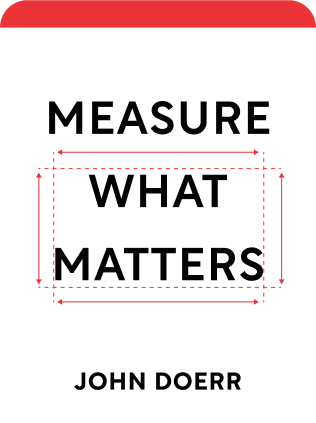

This article is an excerpt from the Shortform summary of "Measure What Matters" by John Doerr. Shortform has the world's best summaries of books you should be reading.
Like this article? Sign up for a free trial here .
What are the best OKR examples for information technology? How can using OKRs make your IT projects work better and more effectively?
One of the best OKR examples for information technology is Intuit. By setting OKR goals, the IT department was able to communicate with transparency all over the world. This allowed for smoother company operations, product rollout, communications, and more.
Read more about Inuti, on the best OKR examples for information technology, below.
OKR Examples for Information Technology
How to Implement OKRs for alignment: Everyone in the company makes their own OKRs, and everyone’s OKRs are visible to everyone else. This provides the transparency needed for people to connect their goals with those of the company and their peers.
Research shows that highly-aligned companies are twice as likely as non-aligned or badly-aligned companies to be top performers.
For employees to align their goals with their company’s goals, they need to know their company’s goals. This seems obvious, but, according to one study, only 7% of employees actually know what their company’s overarching strategy is and how they’re expected to contribute to its success. This is why the transparency of OKRs is so important.
Example 1: Intuit
OKRs helped smooth Intuit’s transition from offering desktop software to offering cloud-based software, and they highlighted alignment issues that might have gone unnoticed otherwise. This makes it one of the best OKR examples for information technology.
The transparency of OKRs made it clear that the IT department was juggling competing demands: On the one hand, they had to solve the problems of current users, who were using the old software. On the other hand, the leadership team expected them to create a cloud-based system that would be sustainable in the future. The IT team’s daily work wasn’t aligned with the company’s priorities.
Once this alignment issue became clear, the CEO clarified the department’s priorities and gave them permission to let some of the day-to-day issues slide in favor of prioritizing long-term initiatives. Colleagues and managers were also more understanding when IT occasionally dropped the ball—because their OKRs were transparent, everyone knew the goals and constraints of each team, so they understood why some tasks were given priority over others.
Today, employees align their OKRs both vertically and horizontally, connecting about half of their OKRs to those of their superiors and half to those of their colleagues. As of the best OKR examples for information technology, Intuit shows that having the right OKRs can help the whole company thrive.
Global Value
OKRs have been especially valuable as Intuit becomes a global company with teams around the world. Whereas in the past, people working in satellites would wonder what goes on at headquarters, now, everyone knows what everyone else is working on, even people on the other side of the world.
OKR examples for information technology are supported by research. Multiple studies show that employees do better work when they see how what they’re doing connects to their company’s high-level goals, but this connection can be particularly hard to make at remote sites. OKRs solve that problem. Now an employee in Bangalore can see how her OKRs align with those of the company’s mission.
This ability to connect and make progress is proven in one of the clearest OKR examples for information technology.

———End of Preview———
Like what you just read? Read the rest of the world's best summary of John Doerr's "Measure What Matters" at Shortform .
Here's what you'll find in our full Measure What Matters summary :
- How Google uses OKRs to rally 100,000 employees in the right direction
- How to avoid setting useless OKRs, and how to set great ones
- Key subtle behaviors your team must master to make OKRs work






